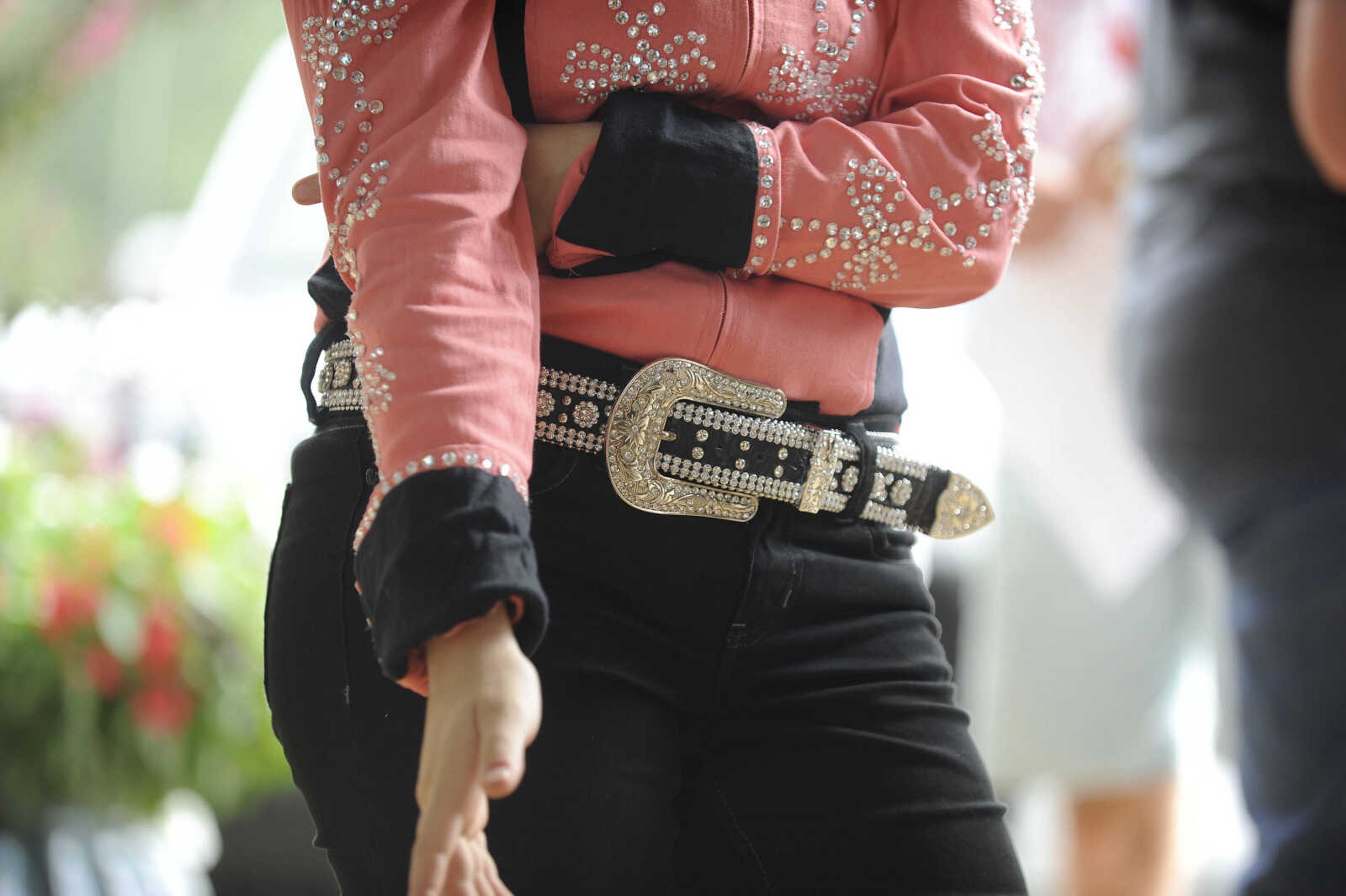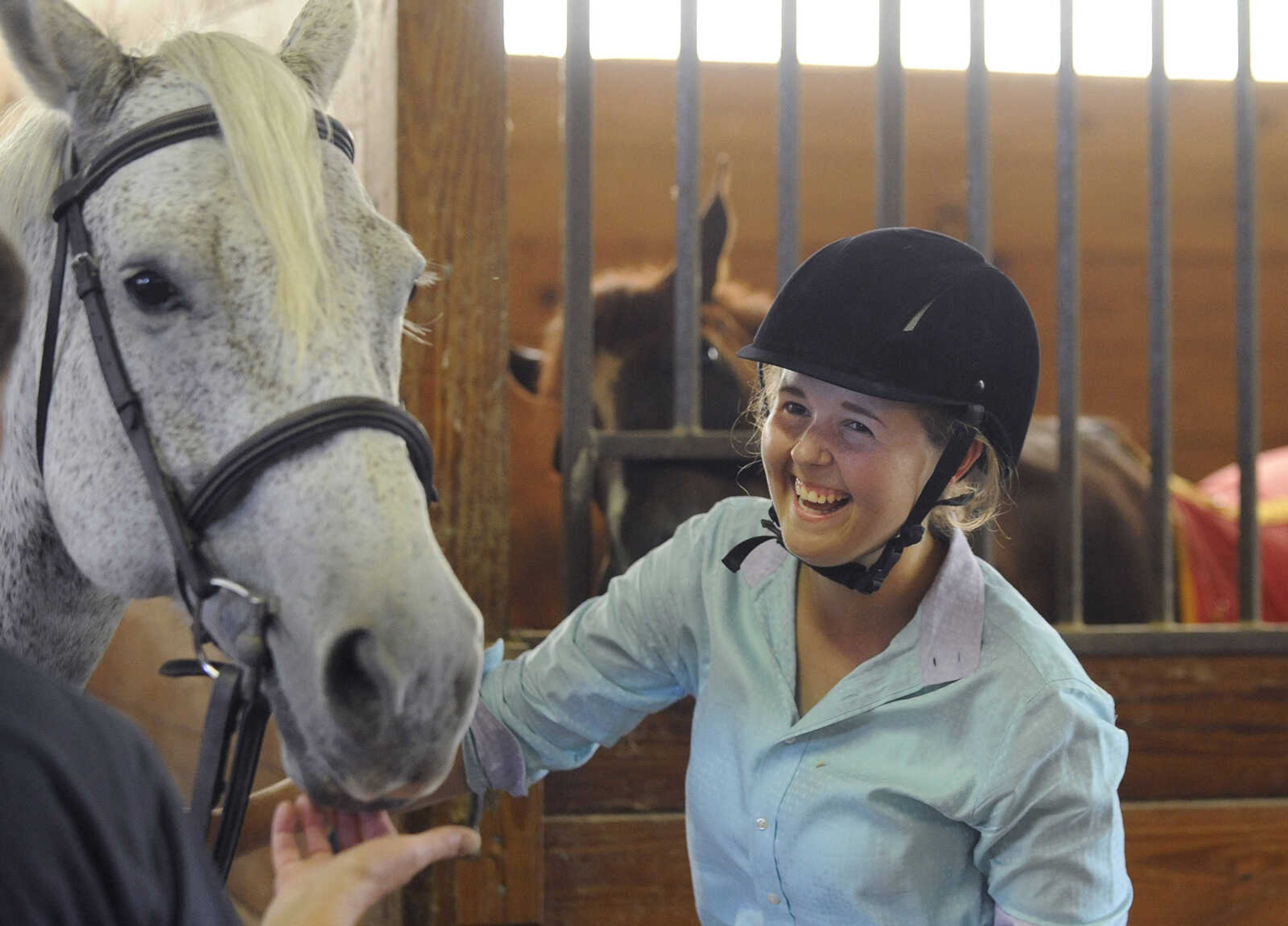On a September afternoon, SuAnne Remely's Equestrian Center looks perfect.
The smartly dressed riders, the finely tended horses, the wide exhibition arena nestled in the rising green hillocks of rural Cape Girardeau -- it's almost too picturesque.
But it's the perfect atmosphere for the Southeast Missouri State University Redhawks' first practice show of the year, in which the 15 riders compete against each other.
The process begins by choosing horses at random. Team president Alison Fischbeck explains that the show isn't so much about what the horse does, but how well the rider handles the animal.

"It's definitely showing off your horsemanship and riding skills," she explains. "That's why we choose the horses at random, so that you don't ride a horse you know."
After each rider is assigned a horse, they are given the opportunity to observe another rider put the horse through a few paces to try and identify any quirks.
Each rider is also given a sheet of paper with descriptions of each horse's tendencies.
It's filled with equestrian jargon. Candy is light sided, meaning very sensitive. Derbee can get heavy on the forehand and has a flying change, meaning riders have to keep tabs on his lead foot going into jumps.

It can be confusing to newcomers, but this is Fischbeck's fifth year as part of the team. She explains that the schooling is a crucial part of the competition, since in a real show, a rider is forced to make use of every hint available.
"You're looking for the horse's tendencies. At a meet, the horse would be led in and then they would trot a circle, canter a circle and go jump," she says. "It takes real talent to climb on a horse and just go jump it."
In the stables, rider Bre Givens notices Kristie Miller walking past, leading a horse.
"Kristie, I love every time you get on a horse," Givens says. "You just look so happy."
Miller just smiles and shrugs in agreement before heading off to the arena.
Givens turns back to saddling up Romeo. Though he towers over her, she thinks nothing of sticking a hand into the back of his mouth to encourage him to take a bridle. It's impressive, the level of comfort that the two have with each other.
She explains that the genuine enjoyment of being around the animals and working with them translates into the riders' commitment to their sport.
Most have at least one riding lesson a week, while others have as many as three, depending on weekly schedules.
The competition is split into six classes, each one showcasing a different skill. As rider Ashley Mann awaits her division, she explains what types of skills the judges consider in competition.
"What they're looking for is making sure you're on the correct diagonal when you're trotting and correct lead when you're cantering," she says. "If you pick up the wrong diagonal in a show, you'll get it counted against you."
In the equestrian lexicon, diagonals and leads refer to foot position during different riding speeds, which are measured on beats.
"A trot is a two-beat gait and a canter is a three-beat gait," she explains. It turns out equestrians tend to be patient with unknowledgeable spectators as well as with their horses.
Fischbeck takes the first class astride the grey-speckled Lance; points go to the red team, who go on to win the event.
Kelly Flynn rides for the black team, but says the points don't matter as much as the experience.
"We're just lucky to be out here riding," she says. "I can't wait for the season to start."
Connect with the Southeast Missourian Newsroom:
For corrections to this story or other insights for the editor, click here. To submit a letter to the editor, click here. To learn about the Southeast Missourian’s AI Policy, click here.








